
Harbah is a Navy Ship Launched Subsonic Cruise Missile system able to target Enemy Ships and Land based targets within an accuracy of >=10m radius. It employs cutting edge navigation technologies such as Inertial Navigation System (INS) with GPS/GLONASS making it exceptionally accurate weapon system to precisely engage the desired targets. It is capable of engaging land based installations as well as both small and large ships. Harbah has a modular design, allowing a wide variety of warhead, guidance, and range capabilities. Harbah is all weather capable and flies at lower altitude which makes it impossible for countermeasures to come into play, making it one of the deadliest systems.
Salient Features
- Medium Range
- Highly Precise Navigation
- All weather Operation
- High Hit Probability
- Smart Size and Weight
- High Survivability
- Easier Ground Handling
Types of Payload / Warheads
- Fragmentation Warhead
- Anti-ship Warhead
Guidance
- Inertial Navigation System
- DSMAC Camera
- Radar Altimeter
- Imaging Infrared Seeker
- Radar Seeker
| Parameters | Technical specifications |
| Range | >=280Km |
| Speed | 0.6 — 0.8 (Mach) |
| Gross Weight | 1350 Kg |
| Diameter | 0.5 m |
| Length | 6.8 m |
| Fuel | Liquid Aviation Fuel JP-8 |
| Seekers | Radar & IIR |
| Single shot hit Probability | >90% |
| After Sales Service | Yes(Life Support Program) |
| Survivability Features | Multiple way points, Maneuverability, Speed |
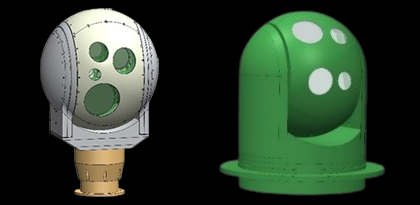
(MULTI – ROLE Infrared Search and Tracking)
Stabilized Optical Tracker, scanner and surveillance system has the ability to detect / track aerial / surface targets like UAVs, helicopters, aircrafts, ground vehicles and ships. Detection of multi targets within the field of view of the thermal imager is carried out as a first step. Subsequently, the system locks on to a primary target selected by the operator.Stabilization
Stabilization makes it possible to install SOT on ships, boats and vehicles like APC/ tank. In order to achieve stabilization, a dedicated six degree of freedom inertial sensor has been incorporated in the system.Surveillance
The operator can search for possible targets by steering SOT using joystick. Once a target is located, operator can command the system to start its tracking and initiate its trajectory estimation.Detection / Tracking
A state of the art image processing module performs target detection and tracking and also generates panoramic views in its respective operation modes.Scan mode
When SOT-3S-E operates in scan mode, it has the ability to generate panoramic views. The philosophy of panoramic views is based on physical scanning of complete horizon by the thermal imager. The streaming video frames from the thermal imager during the scan are then stitched together to generate a 360° image.Operator Console
SOT3S-E is remotely operated by the operator console, which may be installed inside the ops room, of a ship or a vehicle cabin etc. it includes a touch screen display, and joystick controller. The operation of the system is user friendly.Fire Control Computer (FCC)
SOT-3S-E can be interfaced with a variety of weapons like SAMs, anti-aircraft guns etc. For this purpose, customized FCC can be provided for a particular weapon system. This sensor weapon configuration provides high firing accuracy.Components of SOT
- Thermal Imager (TI)
- Color Camera (CC)
- Laser Range Finder (LRF)
- Global Positioning System (GPS)
- Inertial Sensor
- Operator Console
- 2-axes turret
Salient Features
- High resolution cooled Thermal Imager
- Eye-safe Laser Range Finder
- State of the art Tracking/ detection/ scanning algorithms
- High precision turret control
- LOS Stabilization
- Day/ night operation
- Modular Design
- Friendly Graphical User Interface (GUI)
- Capable of integration with other weapons and sensors
Main Specifications
| Type | Miniature | Mid Range | High End | ||
|---|---|---|---|---|---|
| Thermal Imager | Uncooled TI | Uncooled TI | Uncooled TI | Cooled TI | Cooled TI |
| Range | 2 - 3 Km | 4 - 5 Km | 6 - 10 Km | 8 - 15 Km | >20 Km |
| LRF Range | x | Either of LRF or camera | 7 - 8 Km | 15 Km | |
| Visible Band Camera | x | Camera | Yes | Yes | Yes |
| Fire Control Solution | x | With LRF option | Yes | Yes | Yes |
| Weight (outdoor unit) | 5 - 6 Kg | 7 - 8 Kg | 30 Kg | 75 Kg | |
| Typical Applications | Patrol Boats, Land systems | Vehicles, MBTs, Land systems | Frigates, Land | ||
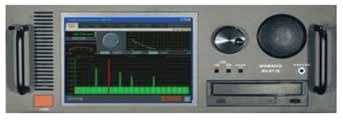
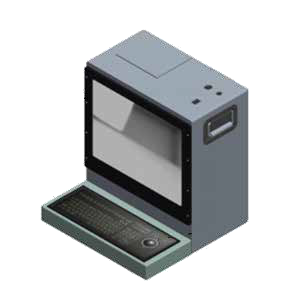
The Sonobuoy Acoustic Processing System (SAPS) is a combination of hardware and software that enable users to receive, process, record and analyze underwater acoustic signals transmitted by Sonobuoy(s) over radio frequency (RF) link.
Salient Features
- Wideband concurrently processed at different frequency resolutions.
- Selectable Center Frequency
- Multiple divider
- Spectral Analysis
- Demon analysis
Main Specifications
| VHF Band | 136.000 MHz to 173.500 MHz |
| Compatible Sonobuoys | LOFAR, DIFAR
|
| Total Sonobuoys Managed | Upto 32 |
| Localization Tools | Energy Plots |
| Classification | Harmonic Dividers |
| Operating Modes |
|
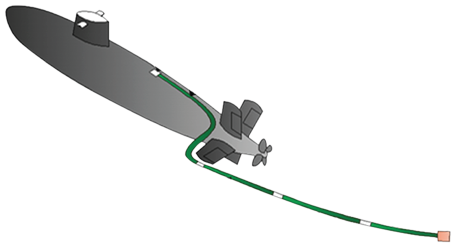
Anti-Submarine Warfare is an important capability for surface ships. Generally, Surface ships use Hull Mounted Sonar for ASW mission and detection of submarines. However, Hull mounted Sonar performance is limited due to its frequency range and environmental conditions. The shortcomings are overcome by use of low frequency Towed Array Sonar that provides long detection ranges and capability to vary depth to counter environmental conditions.
Salient Features
- Long Range detection
- Smaller Diameter
- Light weight
- Neutrally Buoyant
- Maintainable
Main Specifications
| Number of Acoustic Channels | 78 |
| Frequency Band | Up to 1.5 KHz |
| Operating Speed | ~Up to17 Kts |
| Operating Depth | ~Up to 300m |
| Number of Depth Sensors | 02 |
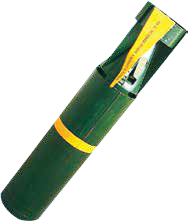
Sea Surge air launched anti submarine weapon can be deployed at shallow depths from either a fixed wing aircraft or a helicopter. This weapon is ideally suited for coastal defence operations.
Techincal Specifications
| Total Length | 142cm |
| Dia | 28cm |
| Weight of full prepared unit | 150 kg |
| HE | 82 kg |
| Firing depth | 21 meter |
System Configuration
- Main body carrying HE
- Fuze
- Tail unit
- Suspension and releasing mechanism
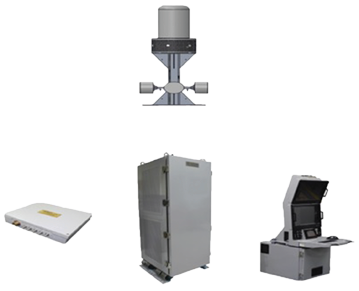
Electronic warfare is of prime significance in modern warfare, both for tactical and strategic purposes. Electronic Support Measures (ESM) system is the most important EW component required for a variety of ground, surface, underwater and airborne applications especially in maritime scenario. RIBAT ESM system performs real-time interception, sorting, analysis and identification of Radar signals in dense and complex EM environment. The RIBAT ESM system covers 0.5-18 GHz of frequency band.
Salient Features
- Robust & Reliable System
- Compact Architecture
- Modular Design
- Fast Processing
Main Specifications
| Operating Frequency | 0.5 -18 GHz |
| Spatial Coverage | 360° Azimuth 60° Elevation |
| Frequency Accuracy | <=5 MHZ RMS |
| Sensitivity | -65 dBm |
| Dynamic Range | 70 dB |
| MTBF | 1500 Hrs |
| Library Capacity | 1000 radars or 4000 modes |
| Power Supply | 110/220 V. Single Phase, 50/60 Hz |
| Radar Blanking | 05 |

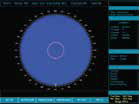
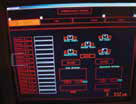



ASTT is a real time simulator that provides tactical training to naval officers & men in surface, subsurface and air operations in the most realistic sea environment. It is based on the most modern High-Level Architecture (HLA) developed by the US DoD and approved by Department of Modeling and Simulation Office (DMSO) and IEEE standards. The simulator imparts comprehensive training to operators in standalone mode as well as in an operationally integrated fleet environment. ASTT replicates the principal components of the Naval Fleet.
It includes all tactical facilities like:
- Tactical maneuvers
- Fleet operations
- Planning and management
- C3l command center
- Scenario generation
- Exercise monitoring
- Trainees evaluation
- Provides true kinematics of vehicles.
- Provides real time modeling of weapons and sensors.
- 12 Cubicles are available with the simulator. Each of them can be configured as:
- Surface ship
- Submarine
- Aircraft
- Helicopter
- MCMV
- Hovercraft
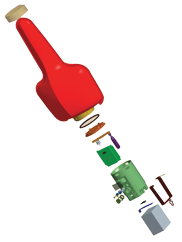
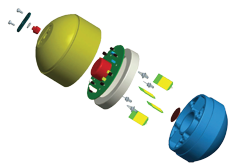
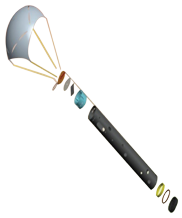
Modern submarines are getting quieter and more efficient, requiring an agile response from maritime forces in terms of ASW operations. The use of Sonobuoys for underwater target detection and classification had become an integral part of this response. Sonobuoy is used for underwater target detection & classification. Sonobuoys can be deployed quickly and over a wide area while providing varied data that can be used to develop an accurate picture of the undersea acoustic environment.
Salient Features
- Longer Shelf life
- Manual Deployment
- Sea water activated Battery
- Light weight
Main Specifications
| Channel Selectivity | 35 Channels selectable in VHF Band 158MHZ-173.125MHZ |
| VHF Transmitter power | Up to 1 watt |
| Operating depth | Preset three different depths selectable(30m/120m/300m) (Shallow/ Medium/ Deep Depth) |
| Tolerable Sea State | Less than 4 |
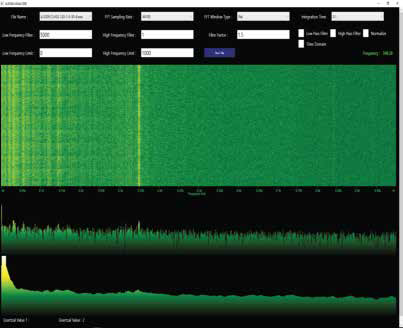
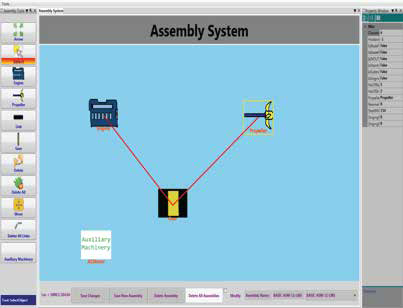
AUDSIM provides recognition and classification of sound signatures via analysis and evaluation tools such as DEMON, LOFAR and SPECTRO etc. The system works in a tactical environment with DOPPLER EFFECT irrespective of SONAR type.
Functions
- All type of biological and environmental noise has also been simulated.
- AUDSIM provides complete aural analysis that includes Dynamic Imbalance, Impulse Imbalance, Hull Resonance and Cavitation.
- The novelty of AUDSIM is assembly designing module which assists the instructor to design main and auxiliary machinery along with associated numeric and acoustic data.
- Another novel feature of AUDSIM is AUDSIM Analyzer. This module can be utilized to classify the unclassified data prior inculcating in a tactical scenario along with identified parameters.
Specifications
- Instructor Application
- AUDSIM Analyzer
- Assembly Designer
- Student Application with analysis tools.
- Record/Replay and post exercise evaluation report
- Sound System with Amplifier and Audio Communication system
- 01 instructor console and 20 student workstations along with 01 LED (55”) for debrief.
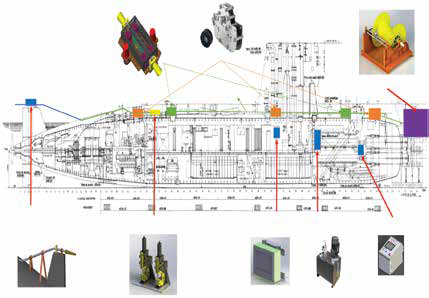
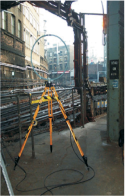
Automated Deployment and Retrieval System (ADRS) for towed arrays is vital to improve covertness and enhance operational capabilities of the submarine in varied scenarios. The overall deployment and retrieval time is greatly reduced along with reduced human resources required for the activity. Since TA is the only long-range sonar, its wartime availability shall also be made available using ADRS which is not currently possible due to manual deployment and retrieval.
Main Specifications
- Reduced Deployment & Retrieval time
- Automatic operation
- Enhanced operational capabilities
Main Specifications
| Overall Power Requirement | 7.5 kW/10 HP |
| Hydraulic Pressure | 250 bar |
| Hydraulic Reservoir Capacity | 100 liters |
| Array Deployment / Retrieval Speed | 20m/min (approx.) |
| Deployment/retrieval time | 20-30min |
| Winch Drum Speed | 5 rpm |
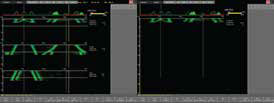
Generic Sonar Trainer (GST) has been developed to train SONAR operators for the underwater acoustics, tactics and techniques. It has features such as surveillance, detection, localization and classification etc. GST trains operators on various specific and generic sonar functions such as surveillance, detection, localization and classification of targets.
Functions
GST provides training in two modes:
Anti Surface Warfare (ASW)
Mine Hunting Warfare (MHW)
Specifications
- Instructor Application for ASW
- Assembly Designer
- Bathymetry (SVP, Ray Path, POD)
- Instructor Application for Mine Hunting
- ASO-94
- VDS - 2069
- USQ-78B
- DUBM - 21D - Detector & Classifier
- TOWED ARRAY of Agosta 90B Submarine
- Hull Mounted Sonar (HMS) Generic
- Generic VDS
- Towed Array
- Generic Sonobuoy
- Generic Mine Hunter — Detector & Classifier
- Simulation of contacts, environmental & propagation conditions
- Simulation of the SONAR characteristics
- Record/Replay of the exercises
- Sound System with Amplifier and Audio Communication system
- 01 instructor console and 08 student workstations along with 01 LED (55”) for debrief
Specific SONARs
Generic SONARs
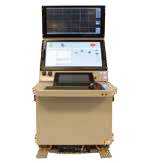


GIDS has developed a Naval Combat Management System (NCMS) which takes in all relevant internal and external information, from onboard sensors, systems and tactical communication link (s), and enables ship command to detect, analyze and act against threats to the ships itself and the friendly forces around. NCMS is able to provide requisite operational capabilities to the command team for undertaking all peace & war missions. NCMS provides a comprehensive and up-to-date tactical picture to the command team and assists the command in four essential domain of naval warfare; Anti-Air warfare (AAW), Anti-Surface Warfare (ASuW), Anti-Subsurface Warfare (ASW) and Electronic Warfare (EW).
Key Features
| Tactical Navigation | Min, Max, Avoidance, CCM, Formation CCM, Stationing, Situation Prediction |
| Search&Rescue | Incident Reporting & Management, Rescue Planning, Search Patterns (e.g. Expanding square search, sector search, parallel lines search etc), Man Over Board |
| Anti-Surface Warfare | Safeguard Areas, Threat Identification, prioritization, promotion/ demotion, Threat List, Auto/ Manual weapon designation, Fire Authorization, Mission Planning, SSM/ Guns Anti-Air Warfare Safeguard Areas, Threat Identification, prioritization, promotion/ demotion, Threat List, Auto/Manual weapon designation, Fire Authorization, CIWS/ SAM/ Gun/ Chaff |
| Anti-Sub Surface Warfare | Torpedo Danger Zone, Threat Identification, prioritization, promotion/ demotion, Threat List, Auto/ Manual weapondesignation, Fire Authorization, Torpedo/ Depth Charge |
| Electronic Warfare | Display of Bearing Lines, Missile Alarms and Warnings, Threat Identification, prioritization, promotion/ demotion, Threat List, Auto/ Manual weapon designation, Fire Authorization, ECM, Chaff |
| Auxiliary and Support | Record and Replay, User and Role Management, Training and Simulation, System Monitoring and Management, Emission Control (EMCON), Alarm Warning and Information Management |
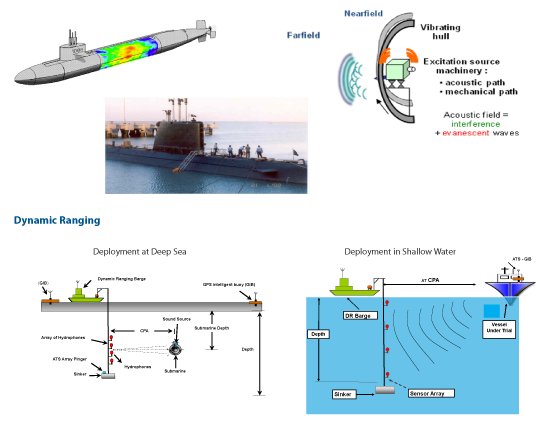
Design, development/manufacturing and refurbishment of underwater transducers, hydrophones and sensors for different applications is a rare technology. The developed products feature in a wide range of underwater sonar applications, ranging from echo sounders, towed arrays, Hull mounted sonars, sonobuoys, and mine-hunting sonars has been developed and delivered to PN.
Salient Features
- Spherical Transducers ( LF,MF & HF)
- Echosounder
- Tonpilz/Pistion
- Cylindrical Hydrophone
- Flexural Disc
Main Specifications
| Resonant Frequencies ranges | 1kHz to 500 kHz |
| Acoustic sensitivity | up to -201 dBV re1V/µPa |
| Depth ranges | 100m to 1400m |
| Bearing Resolution (Theoretical) | ~1.50 + 0.10 deg |
| Range Resolution (Theoretical) | ~6.2cm |
| Source Level | 217 (1µ Pa, 1m) |
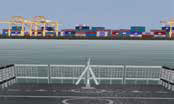
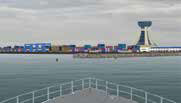
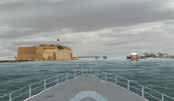
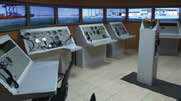
Bridge Pilotage Simulator (BPS) is a generic navigation simulator which simulates the bridge of Destroyer type of ship. The simulator provides 3D virtual environment of different harbors including important navigation landmarks. It provides configuration of different environment effects like day & night, rain, fog, sea states, etc. The simulator provides training of different navigational exercises such as Entering/Leaving harbor, RAS, Mooring, Tug handling, rope passing, MOB etc. The simulator is also capable of incorporating new models of harbors, different type of ships, submarines, etc.
Main Specifications
- Simulation of complete bridge room along with Customized Consoles including ( Quarter Master, Captain, OOW, Pelorus) as per onboard ship
- The simulator displays one large synchronized scene of around 270 degree replicating actual Bridge of the ship
- ECDIS, Echo Sounder, GPS Simulation
- Radar Simulator
Modules
- Instructor Application
- 3D Visual Application
- Radar Simulator
- 3D Sound Simulator
- Record/Replay and post exercise evaluation report
- Physical Consoles
- Bridge Layout



Features
- Latest in Active / Passive Detection and Classification of both ground and moored mines
- Comprises Detector and Classifier Sonar Systems
- Long range LF Detection up to 1200 m
- HF Classification up to 320 m
- Enhanced Bearing and Range resolutions
Detector Sonar - Technical Specifications
| Parameter | Value |
| Number of Sensors in RX Array | 32 |
| Frequency Range | up to 100 KHz |
| Detection Coverage | 300, 600, and 900 |
| Selectable Display Range Scales | 400 m/800m/1200m |
| Transmitter — Source Level | 217 dB (ref 1 µPa) |
| MTBF | up to 500 Hrs. |
Classifier Sonar — Technical Specifications
| Parameter | Value |
| Number of Sensors in RX Array | 100 |
| Frequency Range | up to 400 KHz |
| Detection Coverage | 100 in fix sector |
| Selectable Display Range Scales | 200m/320m |
| Transmitter — Source Level | 222 dB (ref 1µPa) |
| MTBF | up to 500 Hrs. |
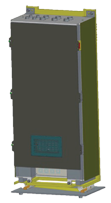
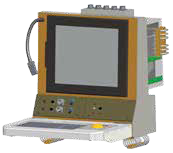
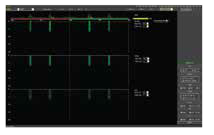
Dry ends of Towed Array sonar cover the whole chain from Front End Conditioning, Analogue to Digital Conversion, Sonar Processing and presentation of the results on new Multi-Function Consoles. The primary purpose of TA Dry End is to provide an accurate rendering of the surface and undersea environment by processing data from the Towed Array Sonar and displaying the information extracted through high quality human machine interfaces on a rugged Multi-Function Computer Console. The displays are geared towards optimally fulfilling the surveillance, tactical and safety requirements of the sonar operators.
Specification
| Sensor Type | Un-cooled |
| Sensor Size | 384 x 288,17 µm |
| Spectral Response | 8-14 µm |
| Objective Lens | 50mm, Manual Focus |
| Focusing Range | 5m - Infinity |
| Field of View | 7.4° x 5.6° (1X) |
| Display | Color AMOLED Display (800x600) |
| Electronic Zoom | 1X, 2X, 4X |
| Polarity | WH/BH/Sepia/Fire/ lron/Rainbow |
| Battery Type | 1x Li-ion (Rechargeable) battery |
| Battery Life | >5 hours |
| Mechanical Interface | MIL- STD 1913, STANAG 2324 |
| Operation Temp. | -350C to +550C |
| Storage Temp. | -400C to +700C |
| Encapsulation | IP67 |
| Vibration & Shock | MIL-STD-810G |
| Weight | < 0.7 Kg (without battery) |
Main Specifications
- Processes architected and structured to comply aviation standards formaximum safety & airworthiness
- Enterprise Collaboration & applicable Integration to geared-up MRO Operations & activities
- Use cutting-edge web-responsive technologies for machine independence
- Instant/ Summarized reporting of KPI with drill-down tools Flexible Data Searching with export capabilities
- Offline/ Mobile Computing (with PDAs / Tablets)
- Intuitive, Informative & Analytical UI/ UX
- Workflows (customizable) with e-signatures
- Enabled with-Barcodes, encrypted passwords
- Data-level access control & security

Aviation Maintenance Management Suite (AMMS) is the first
in-country 100% indigenous, web-centric, technologically
advanced, fully customizable, Maintenance Repair & Overhaul
(MRO) or Maintenance & Engineering (M&E) Solution that can be
customized for any Aerospace & Defence (A&D) Organization to
meet the diversified needs of complete fleet (one solution for all
types of aircrafts).
AMMS enables & integrates all the major departments/ functions of
Maintenance organization through comprehensive
modules/Components including:
- Admin & Security
- Human Resource Management
- Human Resource Training
- Configuration Management
- Document Management
- Inventory Management
- Work Shop Management
Salient Features
- Manage & Maintain complete configuration of Aircrafts from system / sub-system to component level
- Provide spontaneous visibility & status of Line/Shop Replaceable Units (LRUs & SRUs)
- Give complete repair/ maintenance history of aircraft/ equipment for fault diagnosis and rectification analysis
- Ensures automated tracking of life for aircraft & equipment in Hours, Landing and Days
- Track and monitor all type of flight check, schedule maintenances (A-Check, B-check etc.) & Depot Maintenance
- Provide complete visibility and status of work requisition / work orders undergoing at work shops
- Maintain & Verify requisite qualification & technical status to ensure safety & compliance
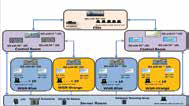
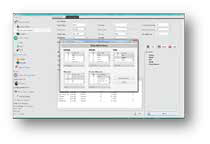
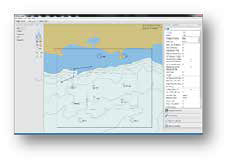
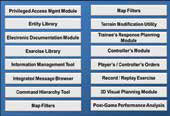
War Gaming Simulator (WGS) simulates military operations involving two or more opposing forces using rules, data & procedures designed to depict an actual or assumed real life situation. WGS provides an efficient and automated means to learn futuristic strategic planning and decision making skills. WGS provides user friendly and computer assisted war games to allow the course members to exercise Naval Operational Planning Process and enhance decision making abilities.WGS supports computer assisted analysis for evaluation of trainees’ actions in an almost real time environment.
WGS Modules
- Privileged Access Management Module
- Entity Library
- Terrain Modification Utility (TMU)
- Exercise Library
- Map Utility
- Command Hierarchy Tool (CHT)
- Information Management Tool (IMT)
- Integrated Message Browser (IMB)
- Electronic Documentation Module (EDM)
- Controller’s Module
- 3d Visual Planning
- Post Game Performance Analysis
- Periodic Reports
Measurement & Testing Services




We design and install Electromagnetic Shielding for military, industry, medical facilities, hospitals and R&D laboratories. We offer a wide range of Electromagnetic Compatibility (EMC) services e.g. EMC testing of ships, submarines, other tactical platforms and electronic systems.
Designing of Small to Medium Size Surface Vessel
We have the capability to undertake the design of small to medium size surface vessel including missile boats, small merchant ships and coastal crafts etc. We have design labs that are equipped with latest ship design software like paramarine that enable following analysis to be undertaken:
- Stability analysis
- Powering calculations
- Sea keeping analysis
- Manoeuvring analysis
- Detailed structural design
- Radar Cross Section analysis
- Vulnerability analysis etc.
Measurement & Testing Services



In today’s naval warfare, knowledge of one’s own acoustic signatures is the difference between the prey and the predator. Signature management facility provides own noise level in full range of audible frequency spectrum, by utilizing static and dynamic measurements of naval vessels i.e. ships, Mine Counter Measure Vessels (MCMVs) and submarines.
Acoustic Signature Management is a very specialized field which not only requires operational skills but also has a very strong proficient development and analytical aptitude. We can provide the said service to friendly navies in the region. It consists of Static Ranging known as Near Field Holography (NAH) and dynamic ranging of moving vessels in open sea.
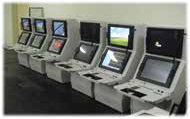
Tactical training of Operations Room crew onboard naval ships is a paramount requirement of modern naval warfare. For this purpose sending of naval units at sea for longer durations is an expensive proposition. On the other hand the Ops Room Simulator provides continuous training to ships crew as convenient while remaining ashore. The system can provide integrated picture of different types of weapons and sensors and create battle scenario as per customer’s requirements.
Capabilities and Main Features
- Provides tactical training for OPS room team
- Includes state of the art replica consoles of weapons and sensors as desired by the customer
- Generic library structure
- Simulation of Fire Control System, sensors, weapons etc.
- Record/ replay feature
- Modular & configurable architecture to meet customized needs
- Through life support is ensured

OVERVIEW
Ship Data distribution System is designed to meet diverse navigation requirements of Naval ships, real-time distribution system for vessel sensor data. Navigation information collection, processing & routing on board ship. Capability of interfacing with vast range of CMS, Missiles, Guns, Radars & Complex Marine Systems.
SALIENT FEATURES
- Support for Ethernet, Serial & Analog (synchronization / Resolver) interfaces.
- Configurable Data rate.
- Satellite Sync and Timing Synchronization output.
- Built-in-Test capability.
- Simulation Mode.
- Recording & Retrieval of data with time stamping. Modular design & upgradable.
- High system reliability.
- Low data latency.
- Redundant System design (Optional)
- Navigation Repeaters (Optional)
- Provides navigation sensors data integration and distribution over Serial, Ethernet & Synchro Networks.
- Sea proven integration with all Weapons & Surveillance Systems on-board all classes of ships.

OVERVIEW
Automatic Antenna Tuner Unit (AATU) is the antenna tuner for submarine. Capability to cutoff the transmitted power in case VSWR crosses the threshold.
The tuner unit consists of following assemblies.
- Control and Power Assembly
- Transformer and Measurement Assembly
- Matching Network Assembly
SPECIFICATIONS
| Operational Power | 110W |
| Tuning Frequency band | (2MHz to 30MHz) |
| Transmitted Power after tuning | (500Watt CW) |
| Impedance of Load | 50-200 Ohm |
| Operational Voltage | 26V |
| Transmitter/Receiver | Full Duplex RS422 link with SUN Station |
| Power Coupler | Dual direction high power |

Tactical Data Link enables information sharing amongst land/ sea/ air platform using HF, V/ UHF radios and SATCOM. Link Green is in service with Pakistan NAVY since 2018 and extensively used in various NAVY exercises. Currently Link Green has been installed onboard 16 Pakistan NAVY Platforms including surface, subsurface, Land and Air based units.
Communication ranges up to 1000 NM have been achieved using Radio Network.
SALIENT FEATURES
- Multilink processing
- Track Number management
- Air, surface, subsurface and land surveillance
- Network management, control and monitoring
- PPLI, Platform and system status
- Correlation of local and remote tracks
- Links Multiple Tactical Data Links/ Super Network
- Weapon management and coordination
- Command messages
- Information management
- Electronic warfare control and coordination
- Data link filtering
- Data forwarding between Links
- Text messages

OVERVIEW
oastal Surveillance Network (CSN) ensure seaward defense of coastal areas / border defense at sea and to minimize asymmetric threat from coast. CSN uses coastal surveillance radars, thermal sensors and AIS. Coastal Surveillance Network (CSN) capability provides Command and Control (C2) system.
CSN is an exclusive network of sensors installed alongside entire coast to enhance Maritime Domain Awareness (MDA). Vital information gathered from these sensors is collated and processed to produce refined actionable information.
FEATURES
- Integration of Local, Regional and Head Quarters operations centers.
- Common Operational Picture.
- Own Assets Monitoring
- Anomaly detection
- Search and Rescue
- Inbuilt Training and Simulation Facility.
- Rugged Tactical Consoles.
- Recording and Replay.

OVERVIEW
oint Maritime Information Command and Control (JMICC) functions as a nerve center to harmonize the efforts of all maritime related organizations/agencies nationwide. It helps generating a coordinated response to maritime security challenges within country's Exclusive Economic Zone (EEZ), primarily through information sharing and inter department/ agency coordination.
JMIS gives a comprehensive and up-to-date Maritime Common Operational Picture (MCOP) to Joint Maritime Information Command and Control (JMICC) for monitoring vessels and planning Search & Rescue operations. For establishing MCOP, JMIS takes input from Long Range Information Tracking (LRIT) service, Satellite Automatic Identification System (S-AIS) and Coastal Surveillance Network.
FEATURES
Authentication: JMIS has two factor authentications
Sources: LRIT, Satellite AIS and CSN
Software Functions:
- Operational Picture Compilation and Presentation.
- Vessel Monitoring and Management.
- Contact of Interests Alerts and Actions Management
- Incidents, Search and Rescue
- Real-time Collaboration
- Pattern of Life (POL) Analysis, Geo-fencing Analysis
- Weather Maps and Management.
- Maritime News and Reports.
- User Management Security
- Database Management
- Disaster Recovery

OVERVIEW
Naval information exchange System is a C2 capability for integrating Headquarter, ship, aircrafts and data units. It collects and share near-real time information from ships and aircrafts.
This information is transmitted to HQs using ship DVBS and UHF Based Broadband IP Radio (if applicable). The same shall be gathered, correlated, and processed for development of Common Operational picture (COP) at HQ and COP will be disseminated to the units.
FEATURES
- Situational Awareness
- Tasking
- Record and Replay
- Navigation
- Search and Rescue
- Officer in Tactical Command
- User Role management
- Track Management
- AIS Processing
- Platform data Management
- Lloyds Integration capability
- Resource Management

OVERVIEW
NCW is a system designed to have situational awareness and command & control of overall force. It is comprised of C4I software, Secure Networks, Sensor Interface Units (SIU) and Command & Control Ops rooms for planning and decision making.
It consists of secure IP based network connecting all Shore & Afloat based sensors, command & control rooms, C4I software for situational awareness and operational activities.
FEATURES
- Floating HQ
- Blue Orange Force Segregation
- OTC-OTC information Exchange
- Situational Awareness (CTP, COP etc.)
- Track Management (TM)
- Communication Manager
- Tactical Drawings sharing with other units
- AIS Processing
- Free Text, E-mail and File Transfer, MMS video streaming and view through COTS applications
- Web-PORTAL (Command Web Page Access)
- Message Handling System (MHS)
- Record and Replay (RECREPLAY)
- Platform Data Management (PDM)
- Area Monitoring and Management
- Search and Rescue (SAR)
- Lloyds Integration capability
- Jane's DB as offline capability

OVERVIEW
Electronic warfare is of prime significance in modern warfare, Actenna Unit (Top of The Mast) both for tactical and strategic purposes. Electronic Support Measures (ESM) system is the most important EW component required for a variety of ground, surface, underwater and airborne applications especially in maritime scenario. ESM system performs real-time interception, sorting, analysis and identification of Radar signals in dense and complex EM environment. The SEA-EYE (ESM) system covers 0.5-18 GHz of frequency band.
SALIENT FEATURES
- Compact Architecture
- Modular Design
- Fast Processing
- Robust & Reliable System
MAIN SPECIFICATIONS
| Operating Frequency | 0.5 -18 GHz |
| Spatial Coverage | 360° Azimuth, 60° Elevation |
| Frequency Accuracy | < 5 MHz RMS |
| Sensitivity | -65 dBm |
| Dynamic Range | 70 dB |
| MTBF | 1500 Hrs |
| Library Capacity | 1000radarsor4000 nodes |
| Power Supply | 110/220 V, Single Phase, 50/60 Hz |

OVERVIEW
Naval Platform’s metal structure influences the Earth’s Magnetic Field that surrounds it and this effect is known as Magnetic Signature. These signatures can be used for detection, classification and counteractive measure by adversary’s underwater magnetic mines, harbor entrance barriers and airborne magnetic anomaly detection systems. For safe operation, the Magnetic Signatures of naval platforms need to be brought down to standard thresholds. Degaussing System is a tri-axial current carrying coiling system that produces a magnetic field which is equal and opposite to naval vessel's field in order to nullify its Magnetic Influence
FEATURES
- Customized Solution to Achieve Targeted Residual Signatures
- Open Loop System for reduction of induced and residual permanent field after Magnetic Treatment
- Closed Loop System for complete reduction of both induced and permanent Magnetic Signatures
- Automatic & Manual Mode Operation
- Power isolation at multiple levels for safe operation
- Built-In Test Equipment for Fault Localization & System Performance Monitoring
- System Log Maintenance
- Software password protection at multiple levels.
- Digitally Controlled Programmable Bipolar Power Supplies
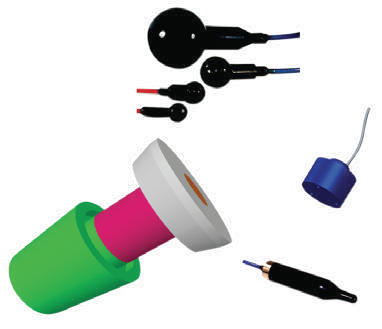
OVERVIEW
Underwater transducers, hydrophones and sensors for different applications. The developed products feature in a wide range of underwater sonar applications, ranging from echo sounders, towed arrays, Hull mounted sonars, sonobuoys, and mine-hunting sonars.
FEATURES
- Spherical Transducers ( LF,MF & HF)
- Echo sounder
- Tonpilz/Piston
- Cylindrical Hydrophone
- Flexural Disc
MAIN SPECIFICATIONS
| Resonant frequency ranges | 1 kHz to 500 kHz |
| Acoustic sensitivity | up to -200 dBV 1V/pPa |
| Depth ranges | 100 m to 1400 m |
| Bearing Resolution (Theoretical) | -1.50 + 0.10 deg |
| Range Resolution (Theoretical) | -6.2 cm |
| Source Level | 217 dB (1 Pa, 1m) |

OVERVIEW
Hull Mounted Medium Frequency sonar is intended for use on surface ships as part of the anti-submarine warfare (ASW) system. It can perform surveillance of the area with simultaneous active and passive operation. It also has modes to detect moored mines and torpedoes. It can perform underwater telephony and telegraphy. Wet end of Hull Mounted Sonar is functional and dry end of Hull Mounted Sonar is under development.
SPECIFICATIONS
| Number of Channels | 96 |
| Modes of Operation | Active / Passive |
| Frequency Band | 2-12 KHz |
| Bandwidth | 1 or 2 KHz |
| No of beams | 32 |
| Transmission Modes | ODT / RDT /SECTOR |
| Coverage | ~360 deg (ASW) / ~180 deg (MAS) |
| Threshold | Automatic and manual |
| Pulse Types | FM / CW |
| Pulse Lengths | Variable, up to 4 seconds |
| Range Scales | 4-48km - ASW,1-4 Km - MAS, MCC |
| Analysis Tools | Narrowband, Broadband, Demon |
| Onboard recording | Recording and play back |
| Operating Modes | ASW, MCC, MAS, , Simulation (fixed) |
| Back up Modes | Back up array mode, Back up Over temperature mode |

OVERVIEW
Mine Counter Measure SONAR is a high frequency, mine hunting SONAR that has capability of detection and classification of both ground and moored mines. We have developed and installed MCMV Sonar known as SAUT-1 on Pakistan NAVY ships that are in use since 2018.
SPECIFICATIONS
| Operating Frequency | 420 kHz with 12kHz pass band |
| Pulse Length | ~2m sec without Coherent Processing. ~5m sec with Coherent Processing. |
| Coverage | 10 deg fix sector |
| Bearing Resolution (Theoretical) | ~ 0.170 deg |
| Range Resolution (Theoretical) | ~ 6.2cm |
| Source Level | 221 dB (1p Pa, 1m) |
| Number of Sensors in Receiver Array | 100 |
| Coverage | 10° in fix center |
| Selectable Display Range Scales | 200m/320m |

OVERVIEW
Automated Deployment and Retrieval System (ADRS) for towed arrays is vital to improve covertness and enhance operational capabilities of the submarine in varied scenarios.The overall deployment and retrieval time is greatly reduced along with reduced human resources required for the activity. Since, TA is the only long range sonar; its wartime availability shall also be made available using ADRS.
FEATURES
- Reduced Deployment & Retrieval time
- Automatic operation
- Enhanced operational capabilities
SPECIFICATIONS
| Overall Power Requirement | 7.5 kW/ 10 HP |
| Hydraulic Pressure | 250 bar |
| Hydraulic Reservoir Capacity | 100 liters |
| Array Deployment / Retrieval Speed | 20m/min (approx.) |
| Deployment/retrieval time | 20-30min |
| Winch Drum Speed | 5 rpm |

OVERVIEW
Policing of inshore waters against any illegal activity demands for reliable & potent harbor defense system capable to neutralize any saboteur/ illegal act in harbor
Efficient harbor defense system calls for rigorous use of patrol boats having high reliability factor. To fulfill this requirement Police Boat is the solution.
FEATURES
- Length :12.9m
- Beam: 4.3m
- Displacement: 11.8 Ton
- Speed : 35 knots
- Roles of Fast Patrol Boat Law enforcement:
- Prevention or repression of illegal activities
- Rescue operation in inshore waters
- Fast interception and boarding of suspect craft in inshore waters
- Protection against sabotage

OVERVIEW
Transportation of mariners and supplies at border areas in creeks and deployment of troops in naval operations at sea require special purpose vessel to operate in restricted waters with adequate performance.
Creek areas are characterized by shallow depths, narrow turns in channel and additional care is required for guarding underwater hull appendages against accidental / deliberate grounding
SALIENT FEATURES
- Length: 15 m
- Beam: 4.5m
- Displacement 23.25 Ton
- Speed 15 knots
- Roles of Creek Craft :
- Patrolling
- Transportation of personnel in creek areas
- Logistic support to forward posts.
- Recce and patrol in creek areas.
- Search and rescue
- Show of force in the area of operation

OVERVIEW
Rigid Hull Inflatable Boats (RHIBs) are considered most effective craft for patrolling in harbor and shallow waters. These boats are extensively used for harbor patrolling due to rugged construction and high reliability.
RHIBs of various sizes (5.5m, 10.35m and 11.75m) have been developed.
ROLES OF RHIBS
- Patrolling for security of coastal installations
- Boarding and lifesaving operations
- Rescue operation in harbor
- Prevention & Repression of illegal activities
FEATURES
| Specifications | RHIB - 5.5 | RHIB-10.35 | RHIB-11.75 |
|---|---|---|---|
| Length (m) | 5.5 | 10.35 | 11.75 |
| Breadth(m) | 2.2 | 2.68 | 3.65 |
| Draught (m) | 0.4 | 0.47 | 0.7 |
| Max Speed knots | 35 | 35 | 40 |
| Displacement (Full load) Ton |
1.8 | 1.8 | 7.6 |
| Propulsion hp | 2 x 150 | 2 x 200 | 2 x 300 |

OVERVIEW
Fast Attack Craft (Missile) FAC(M) has been designed for Pakistan Navy with high speed, reconnaissance, surveillance and Anti-surface warfare (ASuW) capabilities. Ship has been designed with particular consideration on safety, performance, reliability and ease of maintenance. The ship has sufficient capacity to sustain independent operations as per given range and endurance at cruising speed.
Stealth features of the vessel include optimized Radar Cross Section (RCS) and active magnetic signature reduction. The vessel has been designed in-line with European ship Classification Society, Bureau VERITAS (BV). The design also fulfills the requirements of other maritime standards including SOLAS, IMO / MARPOL etc.
FEATURES
- Length 63m Breadth 8.8m
- Displacement 560 Ton, Speed 30 knots
- 04x diesel engines with fixed pitch propellers
- 03x Diesel-Generator sets
- SSM, CIWS Guns, CMS and ESM
- Search & Navigation Radar

OVERVIEW
Submarines use water compensated fuel tanks. During fuelling, the fuel is pumped into the S/M fuel tanks and compensated water is pushed out and thrown overboard from the fuel tanks. This compensated water has significant amount of oil contents which, if thrown overboard, will pollute the sea water.
The designing of a multipurpose barge based on user requirement which can efficiently carry out the assigned roles.
SALIENT FEATURES
- Length: 30m
- Beam: 8m
- Displacement: 395 Ton
- Roles of Multi-Purpose Barge:
- To collect compensated water from submarine fuel tanks and remove fuel contents to avoid pollution in harbor.
- To act as diesel supply barge.
- Carry out salvage operation in harbor.

OVERVIEW
Modern submarines are getting quieter and more efficient, requiring an agile response from maritime forces in terms of ASW operations. The use of Sonobuoys for underwater target detection and classification had become an integral part of this response. Sonobuoy is used for underwater target detection & classification. Sonobuoys can be deployed quickly and over a wide area while providing varied data that can be used to develop an accurate picture of the undersea acoustic environment.
FEATURES
- Longer Shelf life
- Deployment from multiple platforms
- Sea water activated Battery
- Light weight
SPECIFICATIONS
| Channel Selectivity | 35 Channels selectable in VHF Band |
| VHF Transmitter power | Up to 1 watt |
| Operating depth | Preset three different depths selectable(30m/120m/300m) (Shallow/ Medium/ Deep Depth) |
| Tolerable Sea State | Less than 4 |

OVERVIEW
The Sonobuoy Acoustic Processing System (SAPS) is a combination of hardware and software that enable users to receive, process, record and analyze underwater acoustic signals transmitted by Sonobuoy(s) over radio frequency (RF) link.
FEATURES
- Wideband concurrently processed at different frequency resolutions.
- Selectable Center Frequency
- Multiple divider
- Spectral Analysis, Demon Analysis
SPECIFICATIONS
| VHF Band | 136.00 MHz to 173.500 MHz |
| Compatible Sonobuoys | LOFAR, DIFAR |
| Analysis Tools | Narrowband Broadband Demon |
| Total Sonobuoys Managed | Up to 32 |
| Localization Tools | Energy Plots |
| Classification | Harmonic Dividers |
| Operating Modes | Initialization and Self-Test Normal operation Replay mode |

OVERVIEW
SMTT simulator is an exact replica of the submarine Operation room. The dimension, configuration, colors, and appearance of the controls would be reflected; it includes complete hardware of submarine Operation room. Where the sound effects are required would be reproduced electronically. SMTT is capable to provide various simulated training scenarios for different situations. It facilitates REALISTIC detection, tracking and analysis of submarines & surface vessels in different tactical maps as well as high fidelity underwater acoustic and sensor simulations.
SMTT facilitates defense and attack operations against computer generated forces which are simulated as REALISTIC target. Platforms are capable of applying various Anti-Submarine Warfare (ASW) tactics and procedures. Torpedo firing and guidance training as per actual system are the principal requirement to be accommodated with high fidelity to enable the submarine crew to respond properly to specific tactical problems.
FEATURES
Operation room consoles are exact replica of the onboard submarine Operations room. The consoles include all MFCCs, steering station, search periscopes & optronic mast, all ops room auxiliary and alert equipment, echo sounder, analysis/debrief station and instructor console etc.

OVERVIEW
Diving Simulator of submarine is real time simulator for offshore training of the crew. It simulates diving, snorkling and surfacing exercises through reproduction of trim movement +45 degree with variable speed encountered onboard.
This system simulates the operations of Diving Safety Panel, Steering Station, Air Circuits, Hydraulics and other auxiliary assemblies of Diving Control Room.
FEATURES
- Risk free and efficient off shore training of the crew
- Electronic log of entire training session for performance evaluation
- Simulation of various emergency situations like fire, flooding, and equipment failure
- Sound simulation for realistic training
- Performance record and graphical analysis of trainees’ performance
- Training capacity of 10x trainees in one session
SPECIFICATIONS
| Type of Platform | Dynamic |
| Controls | Replica of actual controls |
| Capacity | 20 x Trainees |
| Trim Movement | +45° |
| Speed | 9 arc minutes/sec to 9 degree/sec |

OVERVIEW
Propulsion Simulator of submarine, is a real time simulator for offshore training of Propulsion Control Room crew.
It simulates the operations of Propulsion Control Panel, Main AC Switch Board Panel, Main Motor local control and Cruising Motor local control.
FEATURES
- Risk free and efficient off shore training of the crew
- Console to manage and monitor the training sessions
- Electronic log of entire training session for performance evaluation
- Simulation of various emergency situations like fire, flooding, and equipment failure
- Performance record and graphical analysis of trainees
- Training capacity of 8x trainees in one session
SPECIFICATIONS
| Type of Platform | Static |
| Controls | Replica of actual controls with simulated responses |
| Power Supply | 220 V+10%, 50 Hz |
| Backup Power | UPS |

OVERVIEW
The FAWMIS is web-based service-oriented software solution for maintenance & supportability management of any sort of assets (Power Plant, Military Tanks, Missile Delivery System, Surface/subsurface vessels etc.)
With FAWMIS you can;
- Optimize complex / expensive major overhaul operations
- Extend operational life, life time supportability
- Ensure quality & compliance for Fleet worthiness
- Reduce significant time/cost with transparency
- Maximize the availability &reliability of surface/subsurface vessels
- Increases reliability, availability and maintainability
- Reduce overheads & repair cost of fleet
- Converge relevant operational picture at appropriate management level
- End-to-end tracking of all activities
- Increases MTBF and reduces MTTR
FEATURES
- Configuration Management System
- Corrective Maintenance System
- Preventive Maintenance System
- Services Requisition System
- Human Capital Management System
- Financial, Costing & Budgeting System
- Fleet readiness insight
Its core functionality includes following systems:

OVERVIEW
Aviation Maintenance Management System (AMMS) is web centric, technologically advanced, fully customizable, Maintenance Repair & Overhaul (MRO) or Maintenance & Engineering (M&E) Solution that can be customized for any Aerospace & Defense (A&D) Organization to meet the diversified needs of complete fleet (one solution for all types of aircrafts). .AMMS enables & integrates all the major departments/ functions of Maintenance organization through comprehensive modules/components.
FEATURES
- Admin & Security
- Human Resource Management & Training
- Configuration Management
- Document Management
- Inventory Management
- Work Shop Management
- Flight-Line Maintenance
- Depot Maintenance
- Traveler Aircraft Document
- Work Order Management
- Defect History Analysis
- Cost Analysis
- Executive Dashboards